Plane Landing Aircraft Carrier - The initial carrier-landing qualifications for the Chance Vought F4U Corsair were a disaster. In fall 1942, Lieutenant Commander Sam Porter tested the feasibility of operating the Navy's bent-wing fighter from the deck of the escort carrier USS Sangamon steaming in the Chesapeake Bay.
After four terrifying landings, he called it quits, certain the airplane was on the verge of killing him. Over time, Vought engineers and men in the field implemented upgrades to the promising but troubled fighter. Greater air pressure in the airplane's landing gear oleo easily eliminated much of the pronounced bounce.
Plane Landing Aircraft Carrier
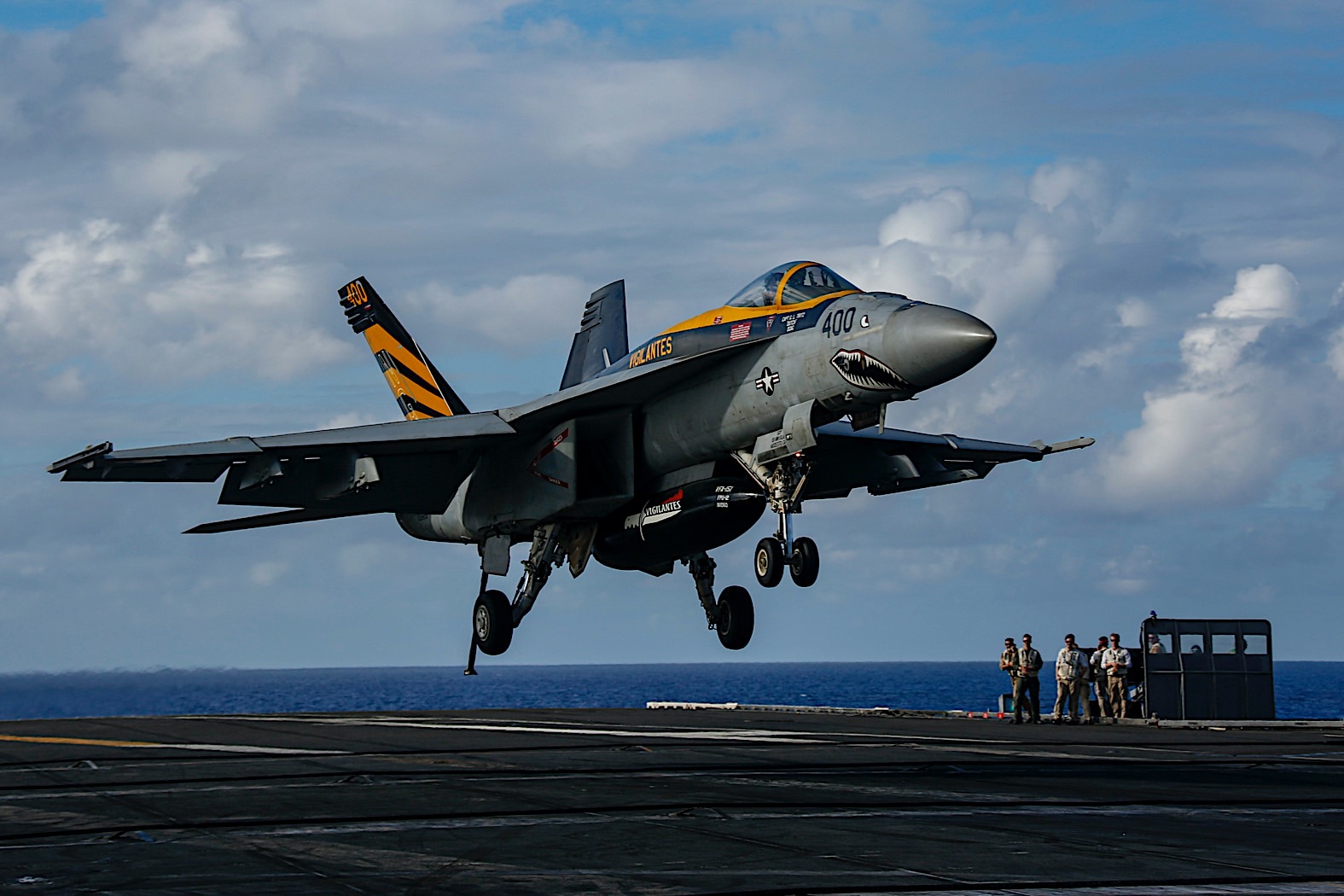
For a better view from the cockpit, designers replaced the “birdcage” canopy with a frameless clear “bubble.” The additional head space allowed the pilot's seat to be raised by eight inches. An improved F4U-1A was in the Pacific with the Marines in the summer of 1943.
To pull off this incredible trick, the pilot needs to approach the deck at exactly the right angle. The landing procedure starts when the various returning planes "stack up" in a huge oval flying pattern near the carrier.
The Carrier Air Traffic Control Center below deck decides the landing order of the waiting planes based on their various fuel levels (a plane that's about to run out of fuel comes down before one that can keep flying for a while).
When it's time for a plane to land, the pilot breaks free of this landing pattern and heads toward the stern of the ship. In addition to the LSOs, pilots look to the Fresnel Lens Optical Landing System, commonly referred to as the lens, for landing guidance.
The lens consists of a series of lights and Fresnel lenses mounted on a gyroscopically stabilized platform. The lenses focus the light into narrow beams that are directed into the sky at various angles. The arresting wires are stretched across the deck and are attached on both ends to hydraulic cylinders below the deck.
If the tailhook snags an arresting wire, it pulls the wire out, and the hydraulic cylinder system absorbs the energy to bring the plane to a stop. The arresting wire system can stop a 54,000-pound aircraft traveling 150 miles per hour in only two seconds, in a 315-foot landing area (a 24,500-kg aircraft traveling at 241 kph in a 96-meter landing area).
Despite more hair-raising attempts to make the Corsair carrier-ready, conducted by Navy squadrons VF-12 and VF-17, most of the original aircraft found a home in Marine Corps combat squadrons flying from—and more importantly, landing on—island bases.
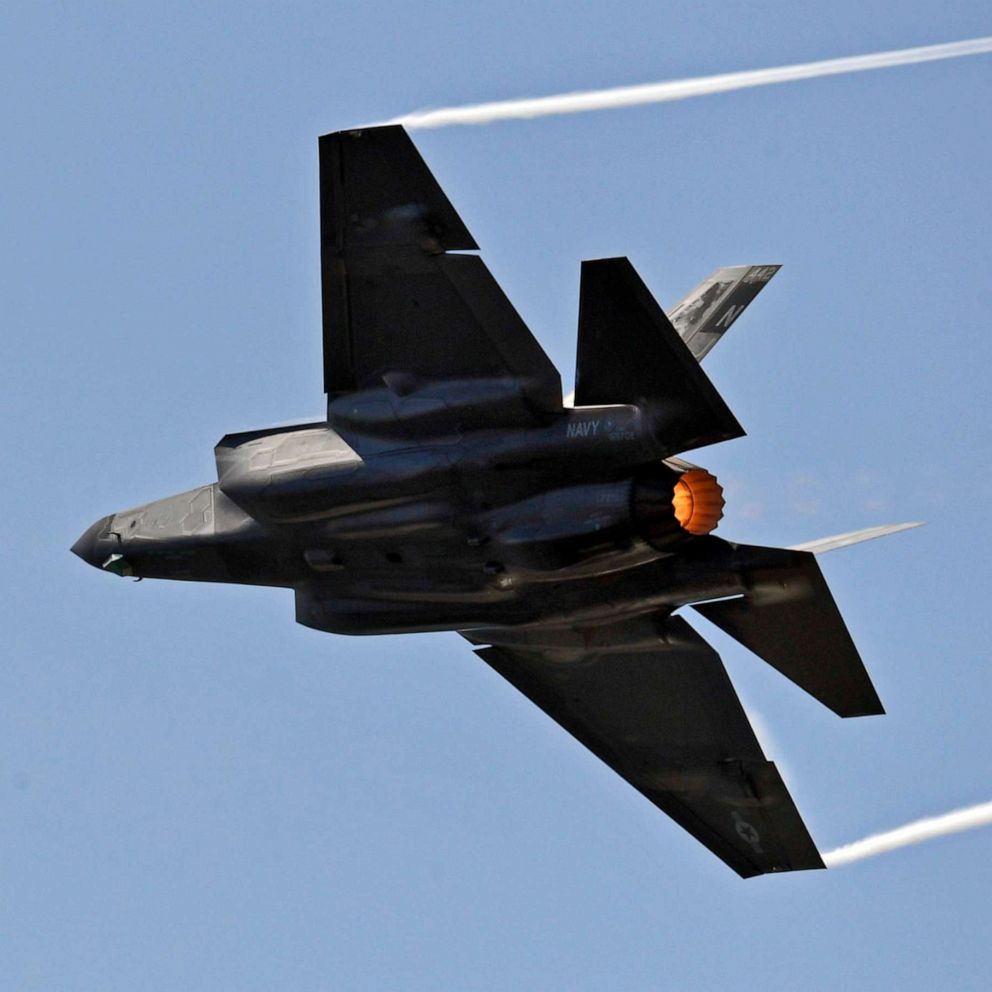
In this article, we'll find out what the U.S. Navy's modern Nimitz-class aircraft carriers are all about. We'll learn what's on the different decks, take a look at the amazing machines that help launch and land aircraft, and find out a little about daily life on these enormous floating bases.
As we'll see, the modern aircraft carrier is one of the most amazing vehicles ever created. Aircraft carriers have been the centerpiece of the United States Navy since World War II despite the fact that their most basic and important function, launching and landing fighter jets on a ship in the middle of the ocean, proves to be a very difficult task.
Due to the extremely limited runway space on the decks of these mobile machines, engineers have been forced to develop powerful systems to accelerate and decelerate aircraft in a very short period of time. In late 1942 and early 1943, sailors fashioned the first versions of the stall strip from simple blocks of wood for Corsairs already in service, while assembly lines at Vought, Goodyear, and Brewster soon added factory-built metal stall strips to each new aircraft.
But the compromised visibility and wild bounce didn’t frighten Porter as much as the airplane’s behavior during the moments in between. Seconds from touchdown, flying slow and low, with flaps, gear, and arresting hook buzzing in the slipstream, the Corsair suddenly stalled.
And the way it stalled would have terrified any pilot. As soon as an aircraft lands, it's pulled out of the landing strip and chained down on the side of the flight deck. Inactive aircraft are always tightly secured to keep them from sliding around as the deck rocks back and forth.
When the bugs were ironed out, the F4U hit its stride. Vought's venerable "U-Bird" went on to become one of the best naval fighters of World War II, racking up 2,140 victories in aerial combat. Only 189 Corsairs were lost to enemy aircraft.
Medal of Honor recipients “Pappy” Boyington, Robert Hanson, and Kenneth Walsh each claimed more than 20 victories, making the Corsair nearly as famous as the much-revered P-51 Mustang and flashy P-38 Lightning. There are four parallel arresting wires, spaced about 50 feet (15 meters) apart, to expand the target area for the pilot.
Pilots are aiming for the third wire, as it is the safest and most effective target. They never shoot for the first wire because it's dangerously close to the edge of the deck. If they come in too low on the first wire, they could easily crash into the stern of the ship.
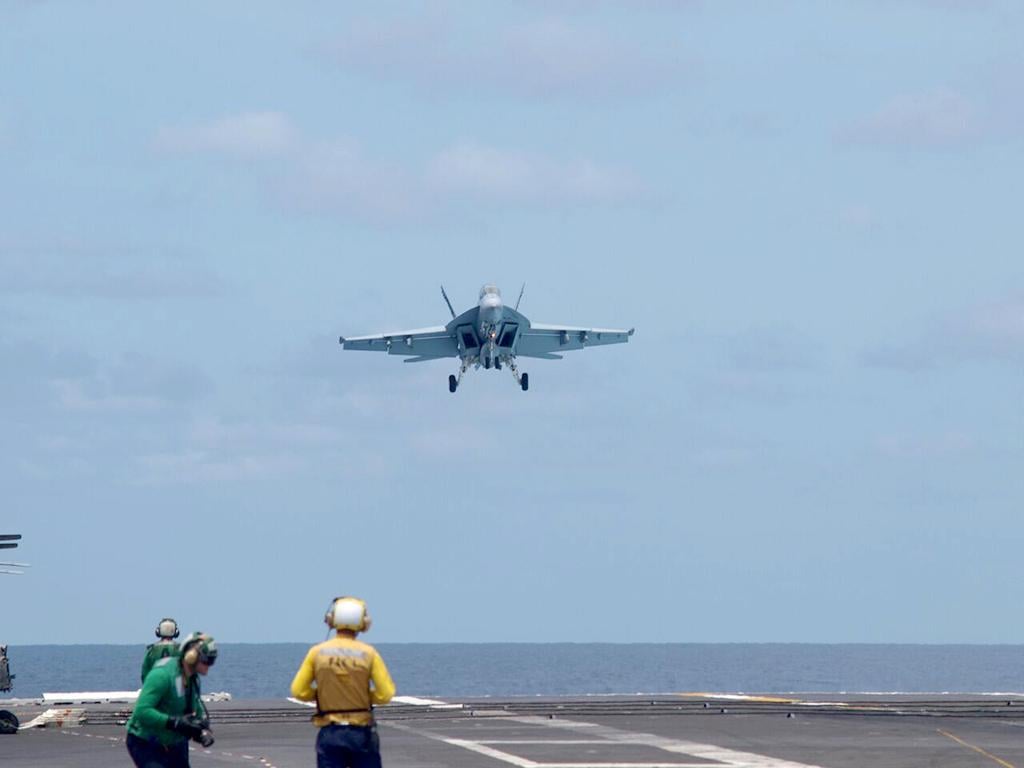
It's acceptable to snag the second or fourth wire, but for a pilot to move up through the ranks, he or she has to be able to catch the third wire consistently. When the Corsair thumped down on the deck, the landing gear's oleos—shock-absorbing struts—bottomed out, then bounced back like giant pogo sticks, causing the airplane to bound over the arresting wires.
If other aircraft had been parked on the forward part of the Sangamon's flight deck, there would have been a pile-up. One of the major obstacles of using air power in war is getting the planes to their destination.
To maintain an air base in a foreign region, the United States (or any other nation) has to make special arrangements with a host country, and then has to abide by that country's rules, which may change over time.
Needless to say, this can be extremely difficult in some parts of the world. Landing Signals Officers (LSOs) help guide the plane in, through radio communication as well as a collection of lights on the deck.
If the plane is off course, the LSOs can use radio commands or illuminate other lights to correct him or her or "wave him off" (send him around for another attempt). Despite its long and laborious development process, the Corsair's exceptional endurance at the dawn of the jet age was unparalleled.
The last of 12,571 Corsairs rolled off the assembly line on January 31, 1953, earning the distinction of the longest production run of any piston-engine fighter in American history. The Fresnel lens optical landing system provides guidance for correct landing on an aircraft carrier [2].
The lens is located on the side of the runway so that it can be seen by the pilots throughout the entire landing process. When the U.S. Navy really needs to impress people, it flies them out to one of its super aircraft carriers.
Standing 20 stories above the water and stretching 1,092 feet (333 meters) from bow to stern (about as long as the 77-story Chrysler Building is tall), the sheer bulk of these ships is awe-inspiring. But the really amazing thing about a supercarrier isn't its size;
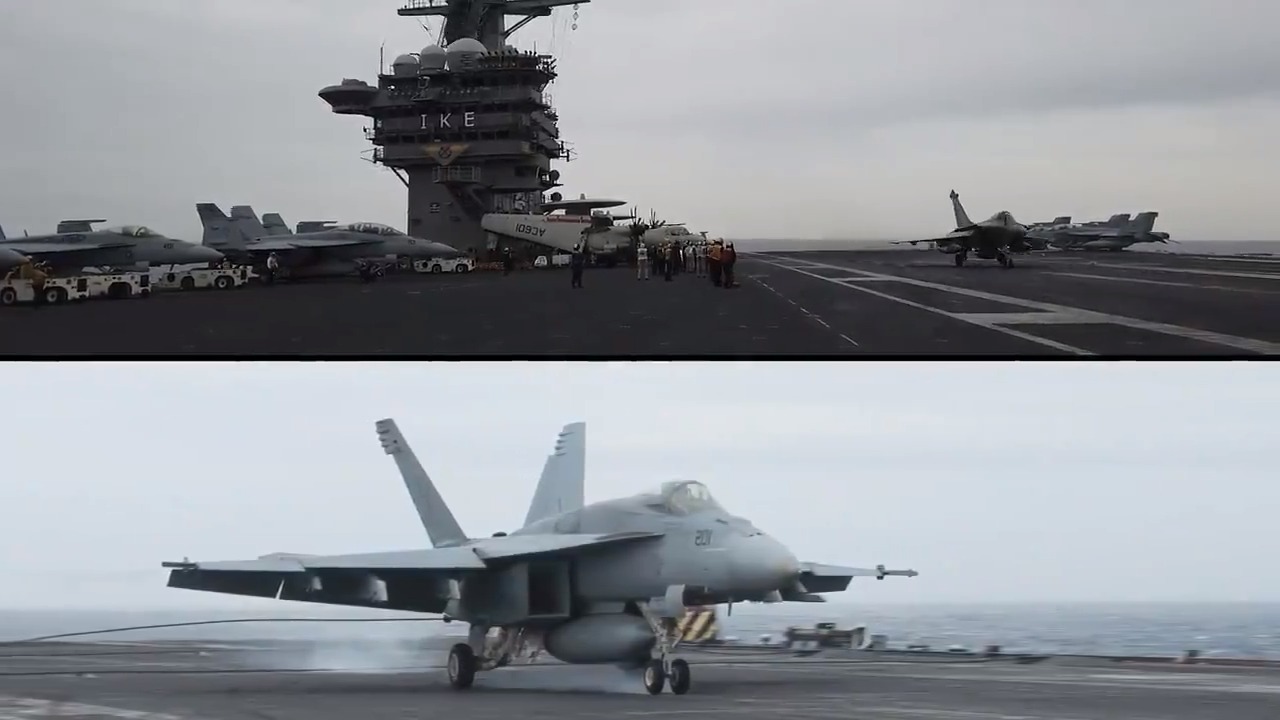
it's the intense scene on its flight deck. When the crew is in full swing, it can launch or land a plane every 25 seconds -- all in a fraction of the space available on a typical landing strip.
The Corsair did not operate from the U.S. Navy carriers until 1944. Even with improvements, the fighter was never a pussycat during landing. Green pilots still found ways to slide, bounce, or flip their Corsairs in those vulnerable seconds of final approach.
Vought designers had sacrificed docile handling qualities for the sake of maximum speed, ceiling, and range. Carriers didn't play a huge role in World War I, but they were central to the air combat of World War II.
For example, the Japanese launched the 1941 attack on Pearl Harbor from aircraft carriers. Today, super aircraft carriers are a crucial part of almost all major U.S. military operations. While the ship itself isn't particularly useful as a weapon, the air power it transports can make the difference between victory and defeat.
When fighting broke out in Korea in 1950, the Corsair was still on the front lines, often supporting troops on the ground with napalm, bombs, rockets, and gunfire. Although primarily operating in the role of close air support, Corsair pilots tangled with Russian-made fighters over Korea and were even dispatched in darkness to track down enemy harassment flights using radar.
In 1952, Lieutenant Guy Bordelon Jr. became the U.S. Navy’s only Korean War ace when he shot down his fifth intruder in his Corsair night fighter nicknamed “Annie-Mo.” As soon as the plane hits the deck, the pilot will push the engines to full power, instead of slowing down, to bring the plane to a stop.
This may seem counterintuitive, but if the tailhook doesn't catch any of the arresting wires, the plane needs to be moving fast enough to take off again and come around for another pass. The landing runway is tilted at a 14-degree angle to the rest of the ship, so bolters like this can take off from the side of the ship instead of plowing into the planes on the other end of the deck.
Before the aircraft lands, a member of the arresting-gear crew inputs the weight specifications of the incoming jet and checks the statistics very carefully [5]. If the inputted weight is too large, the plane might be stopped too quickly, causing damage to the jet.

Even worse, if the inputted weight is too low, the aircraft will not be stopped in time and the jet will fly off the runway into the water. Although the danger is always prevalent, extensive training and practice make these types of catastrophes rare.
© 2023 Smithsonian Magazine Privacy Statement Cookie Policy Terms of Use Advertising Notice Your Privacy Rights Cookie Settings Landing on a flight deck is one of the most difficult things a navy pilot will ever do.
The flight deck only has about 500 feet (~150 meters) of runway space for landing planes, which isn't nearly enough for the heavy, high-speed jets on the U.S. carriers. At its most basic level, an aircraft carrier is simply a ship outfitted with a flight deck -- a runway area for launching and landing airplanes.
This concept dates back almost as far as airplanes themselves. Within 10 years of the Wright Brothers' historic 1903 flight, the United States, the United Kingdom and Germany were launching test flights from platforms attached to cruisers.
The experiments proved largely successful, and the various naval forces began adapting existing warships for this purpose. The new carriers allowed military forces to transport short-range aircraft all over the world. The flight-deck crew has to be prepared for a wide range of unexpected events, including raging aircraft fires.
During takeoff or recovery operations, they have plenty of safety equipment at the ready. Among other things, the flight deck has a small fire truck, and nozzles leading to water tanks and aqueous film-forming foam, an advanced fire-extinguishing material (there are also nozzles for jet fuel and a number of other useful liquids).
A carrier's real muscle is its aircraft squadron, but it has a number of built-in weapons, as well, to take down any enemy aircraft or missiles attacking the ship. A modern U.S. supercarrier has three Mk.
29 Sea Sparrow eight-round missile launchers and two Mk. 15 Phalanx Close-In Weapons System (CIWS) 20-mm Gatling guns spaced around the flight deck, and an additional Mk. 15 on the fantail. The surface-to-air missiles use a radar-seeker to home in on signals (from the carrier's radar system) reflecting off the target.
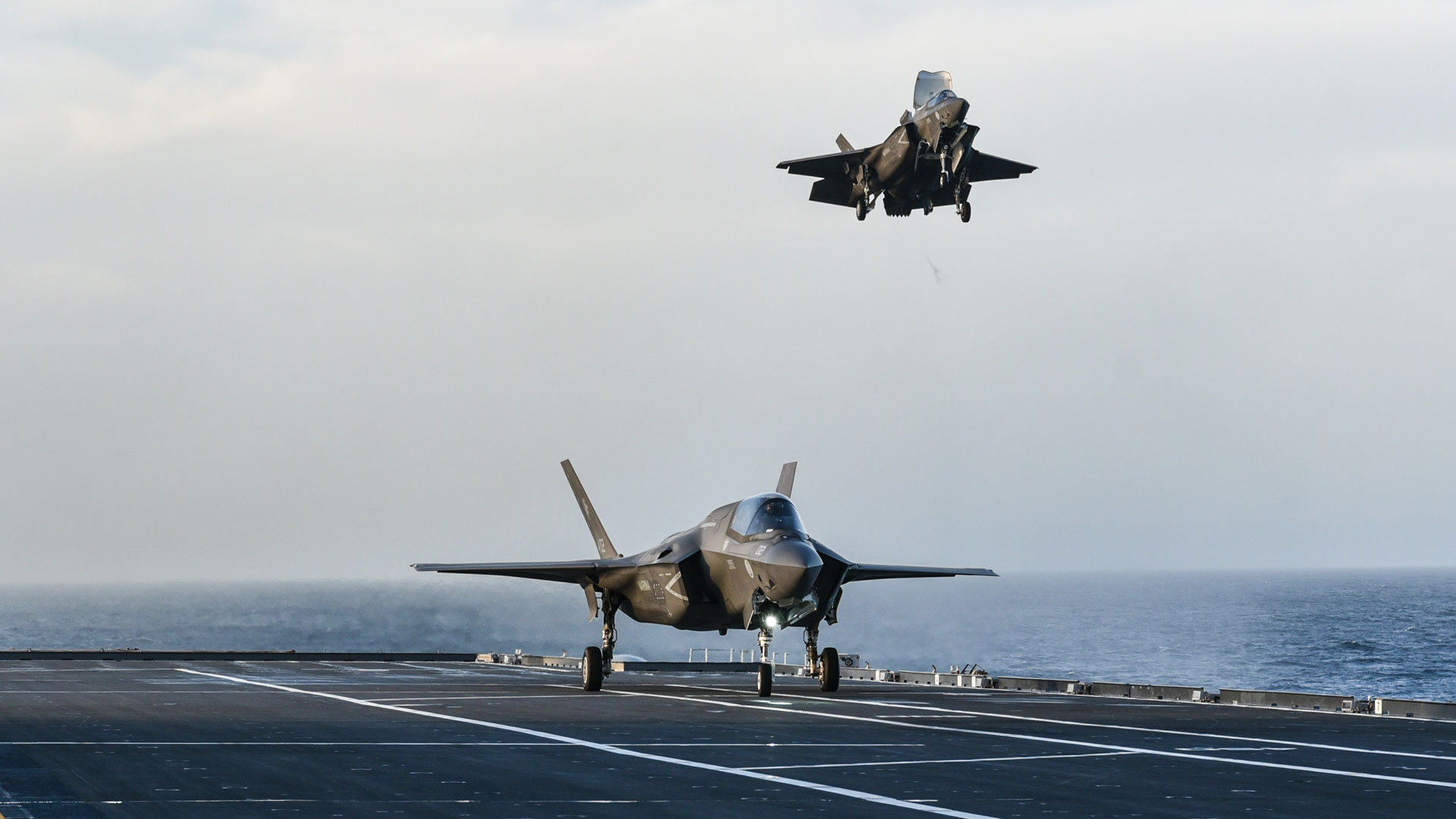
The vicious asymmetric stall was quickly mitigated once the forces acting on the aircraft were fully understood. The fighter's monstrous propeller blades, digging into the air, shoved a twisting spiral of prop wash aft that resulted in dissimilar airflow over the wings.
The left wing lost lift first, and it happened fast. But counteracting that stall was tricky. The Corsair descended to the deck at a dramatic nose-up angle of attack (up to 17 degrees). At the slow speed required for landing and in that unusual attitude, the airplane's control surfaces were all but useless in those crucial moments before touchdown.
Flight-deck personnel also face the risk of a jet engine blowing them overboard. Safety nets around the side of the flight deck offer some protection, but for extra safety, personnel are also equipped with float coats, self-inflating jackets with flashing distress lights, activated by contact with water.
Flight-deck personnel also wear heavy-duty helmets, called cranials, which protect their head and their hearing. The pilot will see different lights depending on the plane's angle of approach. If the plane is right on target, the pilot will see an amber light, dubbed the "meatball," in line with a row of green lights.
If the amber light appears above the green lights, the plane is coming in too high; if the amber light appears below the green lights, the plane is coming in too low. If the plane is coming in way too low, the pilot will see red lights.
During 1963, a KC-130F aircraft made history by landing and taking off from the aircraft carrier; USS Forrestal (CVA-59). The crew successfully negotiated 29 touch-and-go landings, 21 unarrested full-stop landings, and 21 unassisted takeoffs at gross weights of 85,000 pounds up to 121,000 pounds.
Lockheed's only modifications to the original plane included installing a smaller nose-landing gear orifice, an improved anti-skid braking system, and removal of the underwing refueling pods. No tail hook...No catapult. Painted on the side of the fuselage;
"LOOK MA, NO HOOK. The airplane became the largest and heaviest aircraft to ever land on an aircraft carrier, a record that stands to this day. Carriers can move in excess of 35 knots (40 mph, 64 kph), which gives them the ability to get anywhere in the ocean in a few weeks.
The United States currently has six carrier groups stationed around the world, ready to move into action at a moment's notice. Under international Freedom of Navigation laws, aircraft carriers and other warships are recognized as sovereign territories in almost all of the ocean.
As long as a ship doesn't get too close to any nation's coast, the crew can carry on just like they're back home. So, while the U.S. military would have to make special arrangements with a foreign nation to set up a land military base, it can freely move a carrier battle group (an assembly of an aircraft carrier and six to eight other warships) all over the globe, just as if it
were a little piece of the United States. Bombers, fighters and other aircraft can fly a variety of missions into enemy territory, and then return to the relatively safe home base of the carrier group. In most cases, the Navy can continuously replenish (resupply) the carrier group, allowing it to maintain its position indefinitely.
aircraft carrier plane landing video, plane landing on aircraft carrier, aircraft carrier net landing, aircraft carrier landings cockpit view, jet landing on aircraft carrier, aircraft landing on carrier deck, landing on an aircraft carrier, new us aircraft carrier
0 Comments